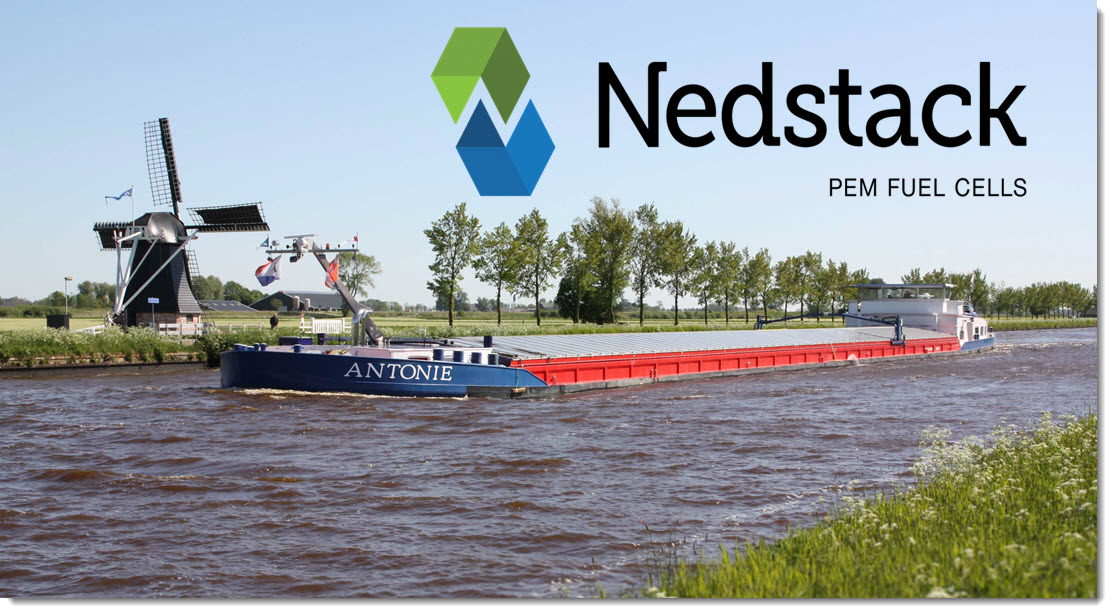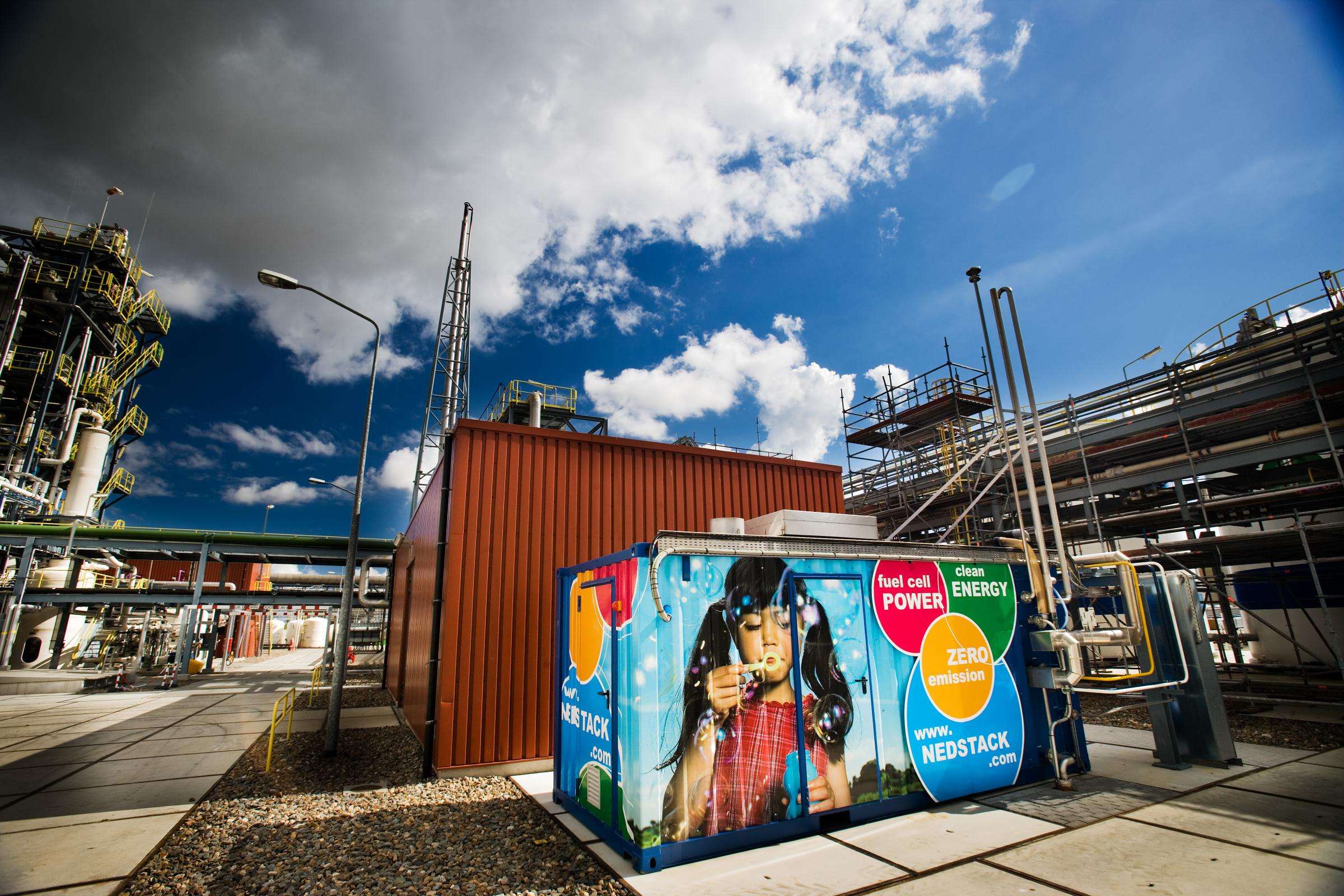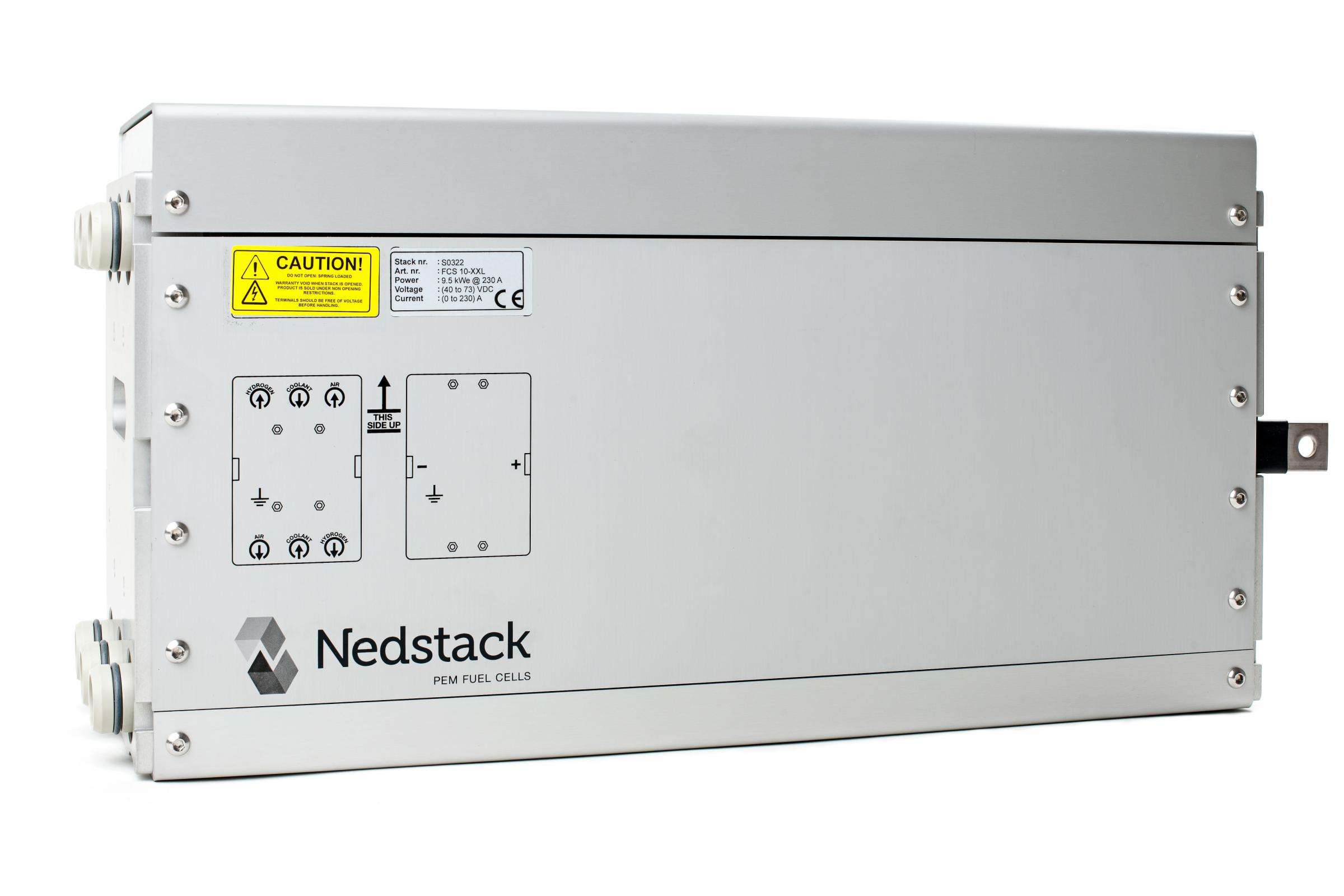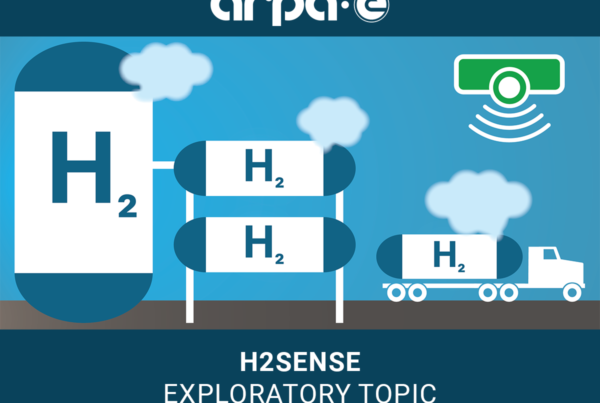
Dutch inland shipping has a strong position when it comes to climate-friendly transport. The CO2 emission per tonne of transported weight per kilometer is the lowest of all forms of transport. In order to maintain this position, the sector intends to implement a significant greening of the still largely diesel-fueled fleet in the coming years. The dot on the horizon is zero-emission in 2050, as laid down in the climate agreement.
Electric ships can contribute to achieving that goal. They sail zero emissions as long as they ‘refuel’ sustainably generated electricity. A challenge is still how an inland vessel can carry enough electrical energy. Battery electric propulsion – now the benchmark for climate-neutral transport in passenger cars – is currently only an option for inland shipping for short distances. Many batteries are required for a large range, and this is at the expense of the payload. This makes it difficult to complete the business case.
Hydrogen offers a way out here. It has a relatively high energy density, allowing sufficient fuel to be brought on board for an acceptable range. Moreover, it is quick to refuel (called bunkering in shipping). For example, fuel cells that generate electricity from – green – hydrogen, if possible in a smart combination with batteries, can make electric sailing possible. With water as the only emission.
Breakthrough in the energy transition
The inland shipping sector has therefore formed a Hydrogen Coalition Inland Shipping in which shippers and inland shipping cooperatives PTC and NPRC are committed to making the transport chain more sustainable. “With a hydrogen vessel, a huge breakthrough in the energy transition can be achieved for the maritime world,” says Kees de Vries, project leader of the WEVA project, which is supported by the Netherlands Enterprise Agency (RVO), the Ministry of Infrastructure and Water Management, and the European Union. “It is now important to get such a ship into service and demonstrate its feasibility. This project could be the breakthrough towards the use of hydrogen in inland and short sea shipping.”
WEVA is the abbreviation for “Hydrogen Electric Cargo Ship Antonie”. The project revolves around the new construction of the inland vessel Antonie van Lenten Scheepvaart BV as a 100% hydrogen vessel. The 135-meter-long ship will transport salt from the Nouryon (formerly AkzoNobel) salt factory in Delfzijl to the Botlek in Rotterdam. Project partners are the NPRC, Lenten Shipping, engine supplier Koedood Marine Group and fuel cell producer Nedstack. Nouryon supplies the green hydrogen.

De Vries: “With the Antonie, we want to show that it is technically and economically feasible to equip an inland vessel with a hydrogen-electric drivetrain. At the same time, we want to demonstrate a new method for bunkering and storing hydrogen.” A second and third ship are already under development, reports De Vries.
PEM fuel cell
Nedstack has made significant progress in recent years in making its PEM fuel cells suitable for marine applications in close collaboration with Koedood. A complete operational test setup has been developed at MARIN in Wageningen in a consortium with MARIN, Damen Shipyards Group, Future Proof Shipping, Marine Service Noord and Holland Ship Electric. This also happened with the support of RVO, in the project FELMAR – an acronym of ‘First ELement MARine’.
Nedstack’s CCO Roel van de Pas, FELMAR project coordinator, explains that Nedstack’s fuel cells are designed for ‘mission-critical high power’ – that is, high electrical power in continuous operation. This places high demands on reliability and reliability, and is accompanied by a design that facilitates easy inspection and service. “These are precisely the basic principles that make the cells suitable for use in inland vessels,” says Van de Pas, “especially in the larger ships that have many operating hours.”
Meeting the power requirement is crucial
Naturally, the combination of fuel cells with an electric drivetrain for inland shipping has special requirements. For example, the system has been tested in a ‘hexapod’ setup that simulates the movements of a ship that sways on the waves. It is important, for example, that the cooling water flow of the fuel cell is maintained. Incidentally, this applies especially in more extreme circumstances such as in seaports and in short sea applications (coastal shipping).
Important in the ‘marinization’ of the fuel cell is also that the propulsion system meets the power requirements of the ship in accordance with the maritime class rules. Upstream, downstream and when maneuvering and mooring. “The skipper should not notice the difference with a diesel engine in this respect,” says Roel van de Pas. This resulted in a configuration in which the fuel cell is combined with a battery to provide peak powers. The FELMAR test configuration includes a 40 kW fuel cell with parameters such as electrical voltage and hydrogen pressure of the order of magnitude relevant for marine application. The latest tests will soon take place under practical conditions in MARIN’s new zero-emission lab.
Nedstack is now preparing systems of 200 and 500 kW for marine applications. The company has recently entered into strategic partnerships with key players such as Koedood, General Electric and Damen Schelde Marine services. Incidentally, Van de Pas not only sees opportunities for hydrogen vessels in inland shipping, but also in sectors such as coastal management, dredging, port companies and ferry services. “These are sectors where the government is a very important client. And you can expect that as a ‘problem owner’ it is very important to stimulate zero-emission solutions. I expect that there will therefore be a lot of interest in hydrogen.”
Bunkering hydrogen
Much will depend on the practical experience with the Antonie. Not only the performance of the drivetrain is important, but also the bunkering of the hydrogen. The availability of the gas is not a problem for this test, it is available at both the loading and unloading ports. But in order to facilitate hydrogen sailing on a larger scale afterwards, it will have to be available in many inland ports. And the construction of a hydrogen infrastructure in such a port requires major investments. Therefore, an alternative is now being investigated with hydrogen tanks the size of a standard container. The bunkering of hydrogen then means no more than replacing an empty hydrogen container with a full one. If a nationwide distribution network of hydrogen containers gets off the ground,

Nedstack is a spin-out of AkzoNobel. The knowledge of polymers, composites and catalysts present there formed a solid basis for the development of PEM (proton exchange membrane) fuel cells. The economic motive was that AkzoNobel’s chlorine production releases a lot of hydrogen. Fuel cells thus generate a valuable product (electricity) from a by-product for which there was little demand at the time. AkzoNobel’s chemical business, including chlorine production, has now been sold and has become independent under the name Nouryon.Nedstacks CCO Roel van de Pas estimates that large stationary systems for demanding (industrial) applications make up about 10% of the fuel cell market. Nedstack is one of the major players in this segment worldwide. The company was the first to produce a PEM fuel cell on a MW scale, which is also the fuel cell that has by far the most operating hours to its name (in the ‘PEM Power Plant’ at the Nouryon chloralkali plant in Delfzijl). Nedstack is also the producer of the world’s largest PEM fuel cell, with a capacity of 2 MW, with which a Chinese chlorine producer has been using the hydrogen produced since 2016.
Read the most up to date Fuel Cell and Hydrogen Industry news at FuelCellsWorks




